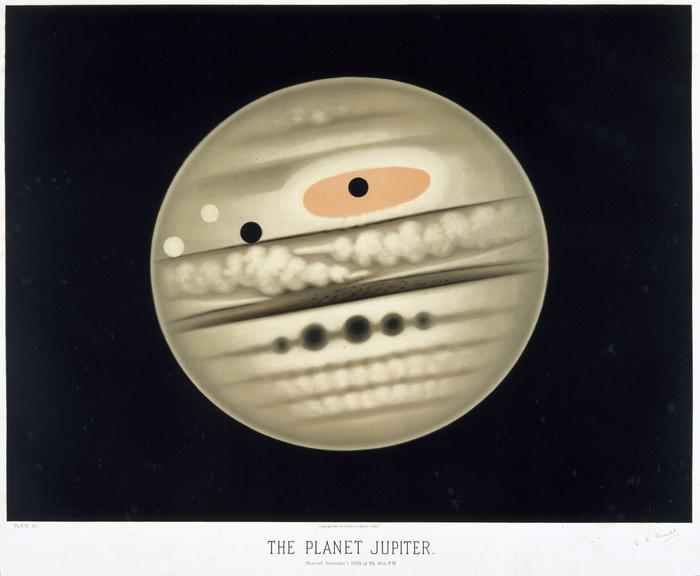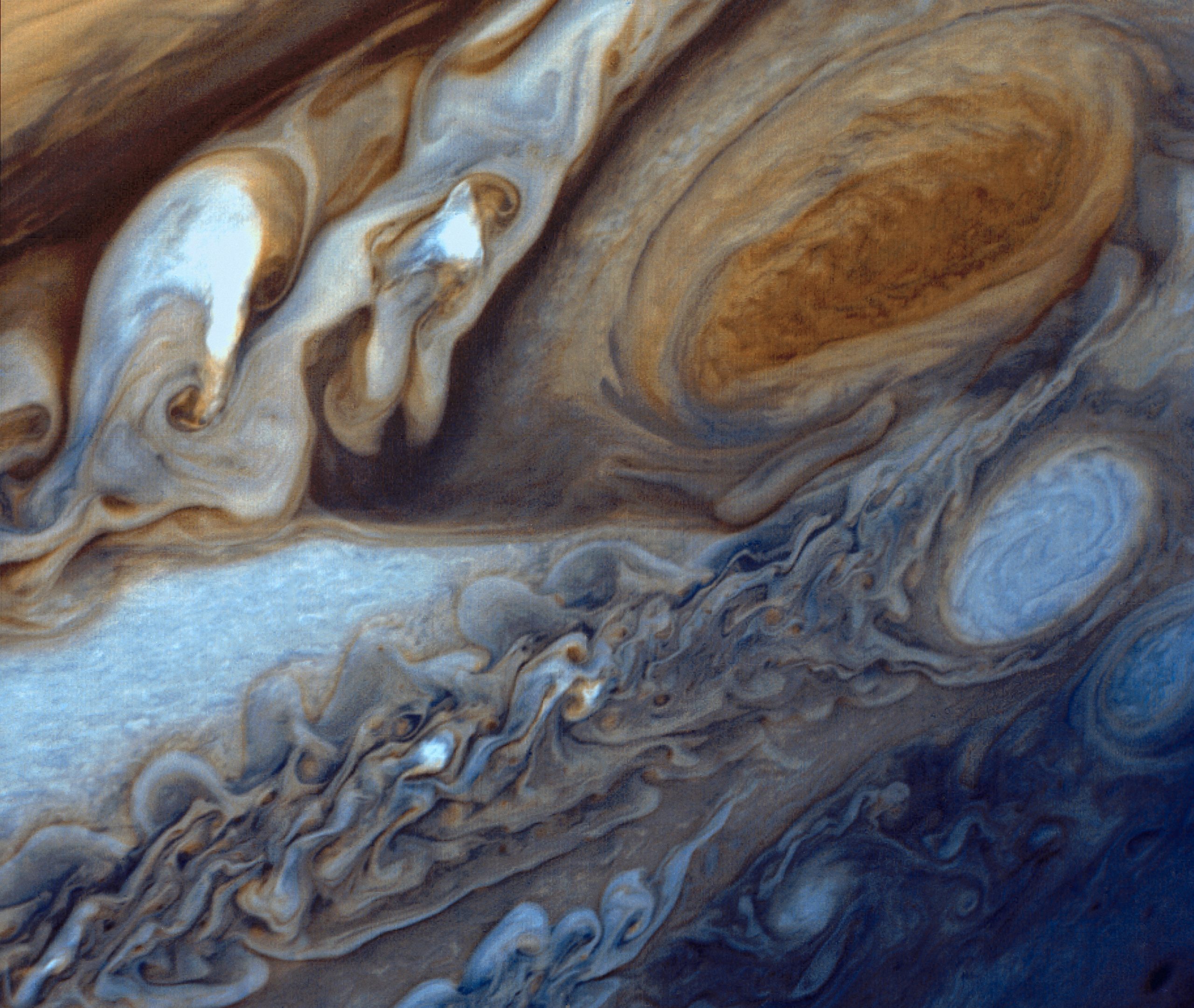Four hundred years ago today (well, tonight) Galileo Galilei trained his telescope on Jupiter and spotted what looked like three stars nearby.

The next night he looked again, and the stars had changed position. Tracking their motion over the next week, he established that there were four of these ‘stars’, and they were in fact moons orbiting the planet.
In March 1610 he published his observations in Sidereus Nuncius (The Starry Messenger). It was a small book – if you get a chance, you can visit the Cosmos & Culture exhibition to see how little our library‘s copy is – but it had a huge impact.
Since then, many more telescopes have turned towards the Solar System’s biggest planet – this beautiful lithograph by Etienne Leopold Trouvelot, part of a series he made at American observatories, shows how Jupiter appeared on 1 November 1880.

Several spacecraft have also visited the Jovian system, including one named after Galileo. This close-up of the Great Red Spot was taken by Voyager 1 in 1979.

Next year, NASA is heading back to Jupiter, with the Juno mission. But you’ll have to wait a while for the first images from the snappily-titled JunoCam, as the spacecraft won’t get there until 2016. In the meantime, why not take a look yourself?
Jupiter is visible to the naked eye, and if you’ve got access to binoculars or a small telescope you’ll see the Galilean satellites. So if you want to follow in Galileo’s footsteps tonight, Jupiter is best seen shortly after sunset from the UK, although your observations might be scuppered by snow! If you’re reading this from the southern hemisphere (surely this blog has achieved global domination by now?!) you need to look shortly before sunset. At least you’ll be warm.
This post was originally published in 2010 to support the Cosmos & Culture exhibition.
